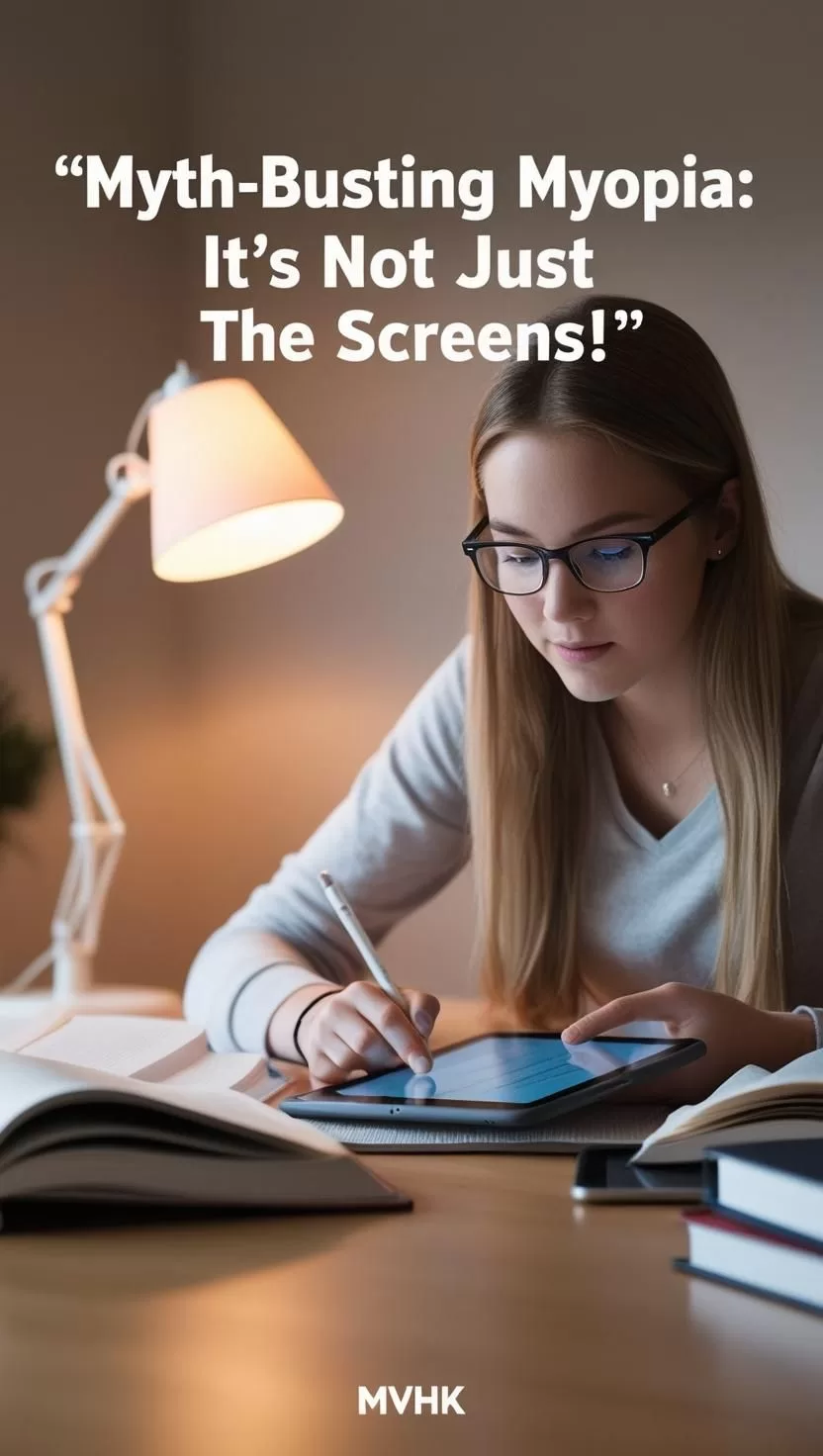Busting the Myopia Myth: It’s Not Just the Screens Causing Vision Problems
Myopia, commonly known as nearsightedness, has dramatically increased over the past few decades. According to national studies, including a major comparison between 1971–1972 and 1999–2004, myopia rates have skyrocketed. But is the widespread belief that screens are solely responsible accurate? Let’s dig into the truth behind the numbers.
1️⃣ Understanding the True Drivers of Myopia Increase
The Role of Educational Pressure
Educational demands have soared globally, especially among students. Extended hours of close-up work—reading, writing, studying—contribute significantly to myopia development. Studies indicate that students engaged in intense academic activities are at higher risk, regardless of screen use.
- Scientific Source: American Academy of Ophthalmology
Indoor Lifestyle Trends
Spending less time outdoors and more indoors has also been identified as a major risk factor. Natural light exposure helps regulate eye growth, which may prevent or slow myopia progression. Lack of sunlight during formative years could explain part of the dramatic rise.
2️⃣ Why Screens Still Play a Role (But Not the Only One)
Digital Eye Strain Is Real
Though not the sole culprit, digital screens do cause temporary eye strain, dryness, and focusing fatigue, which can exacerbate existing vision problems.
- Tip: Follow the 20-20-20 rule: Every 20 minutes, look at something 20 feet away for 20 seconds.
Combined Effect with Other Factors
The synergy of reduced outdoor time, academic stress, genetic predispositions, and screen exposure creates a “perfect storm” for myopia.
3️⃣ Protecting Your Vision in a Modern World
Actionable Strategies for Students
- Increase outdoor activities (minimum 2 hours/day)
- Maintain proper lighting when reading
- Use digital screens mindfully
- Take frequent vision breaks
| Protective Action | Benefit |
|---|---|
| Outdoor activity | Natural light supports healthy eye development |
| Vision breaks | Reduces eye strain |
| Proper lighting | Prevents excessive focusing effort |
| Screen time limits | Decreases focusing fatigue |
The Importance of Regular Eye Exams
Annual comprehensive eye exams can detect early signs of myopia progression and prevent further deterioration through interventions like specialized lenses and vision therapy.
🏁 Conclusion: How to Get Started Today
To combat rising myopia, it’s crucial for students—and everyone—to understand that while screens contribute to the problem, they are not the sole cause. Adopting a balanced lifestyle, spending more time outdoors, and practicing good eye care habits can protect and enhance your vision for life.
FAQ
What causes myopia besides screens?
Educational intensity, genetics, and lack of outdoor time are major contributors.
Can spending time outside prevent myopia?
Yes, studies show outdoor exposure can significantly reduce the risk of myopia progression.
Are there treatments for myopia in students?
Yes, options include special contact lenses, ortho-k lenses, and vision therapy.






